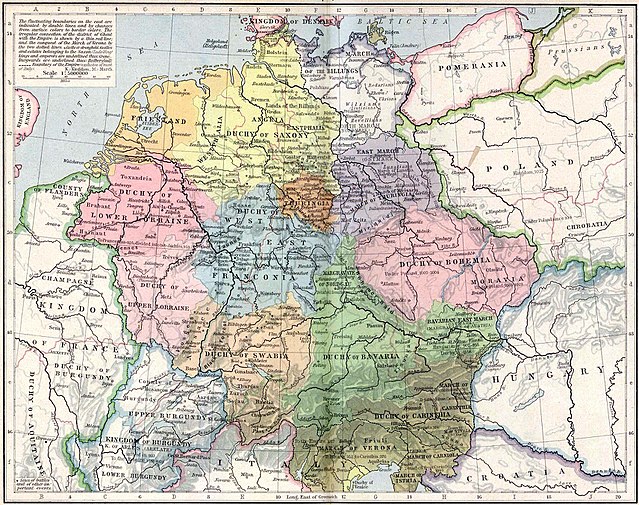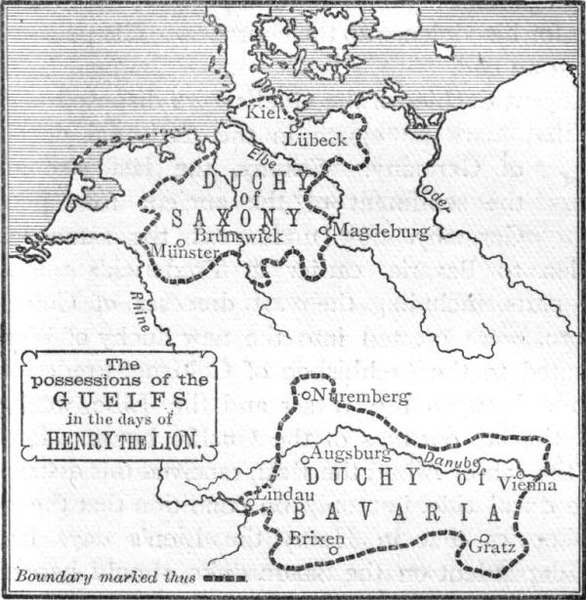Otto I, traditionally known as Otto the Great, or Otto of Saxony, was East Frankish king from 936 and Holy Roman Emperor from 962 until his death in 973. He was the eldest son of Henry the Fowler and Matilda of Ringelheim.
Depiction of Otto on his seal in 968
12th-century stained glass depiction of Otto I, Strasbourg Cathedral
Side view of the Throne of Charlemagne at Aachen Cathedral, where Otto was crowned King of Germany in 936
Central Europe, 919–1125. The Kingdom of Germany included the duchies of Saxony (yellow), Franconia (blue), Bavaria (green), Swabia (orange) and Lorraine (pink left). Various dukes rebelled against Otto's rule in 937 and again in 939.
The Duchy of Saxony was originally the area settled by the Saxons in the late Early Middle Ages, when they were subdued by Charlemagne during the Saxon Wars from 772 and incorporated into the Carolingian Empire (Francia) by 804. Upon the 843 Treaty of Verdun, Saxony was one of the five German stem duchies of East Francia; Duke Henry the Fowler was elected German king in 919.
Stem duchies of the German kingdom 919–1125, by William R. Shepherd: Saxony in yellow, Franconia in blue, Bavaria in green, Swabia in light orange, Lower Lotharingia in dark pink, Upper Lotharingia in light pink, Thuringia in dark orange and Frisia in light orange
Coat of arms of the House of Welf
Welf possessions in the 12th century, showing the duchies of Saxony and Bavaria






